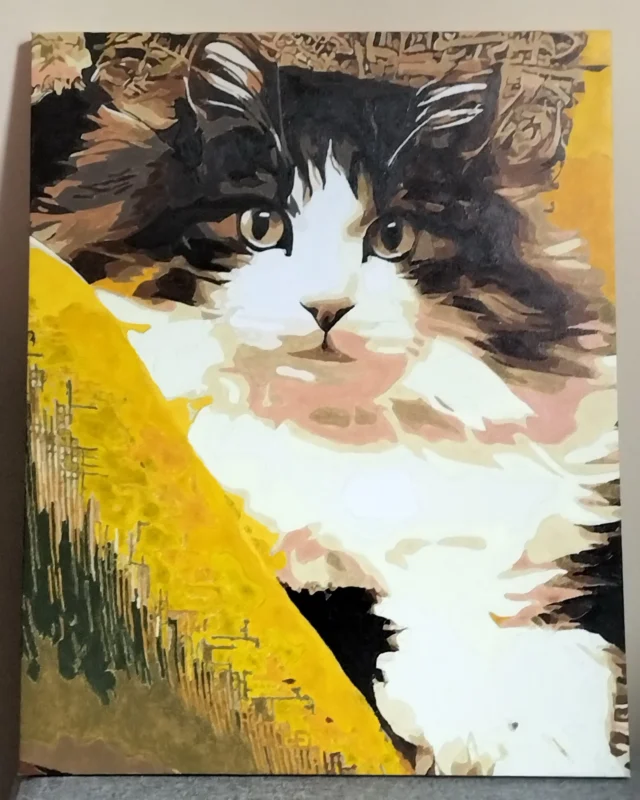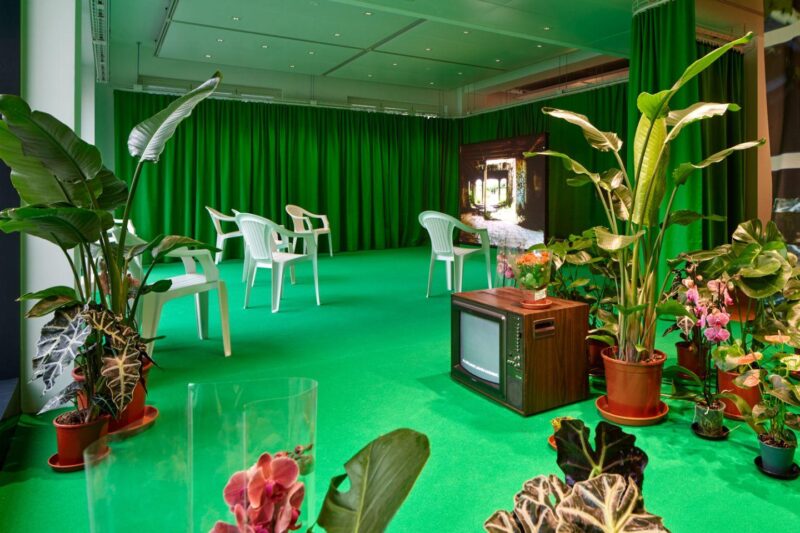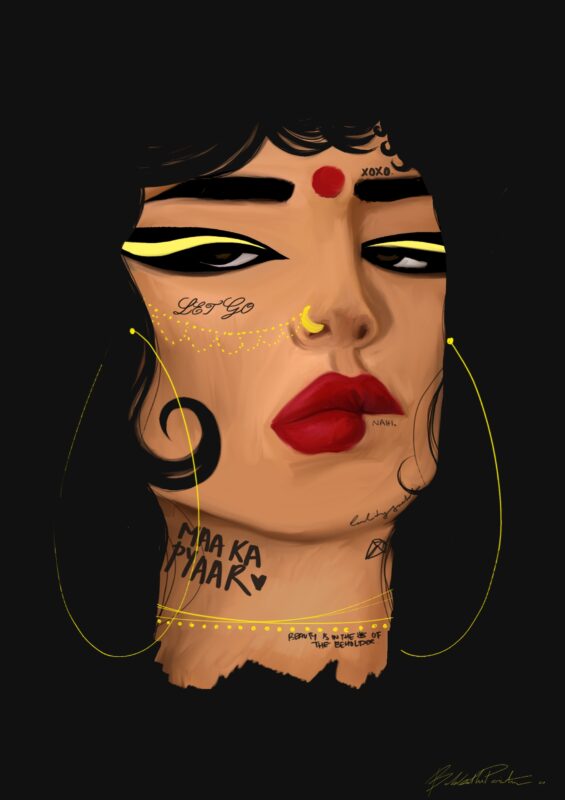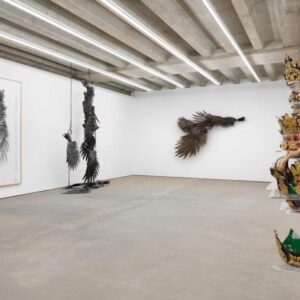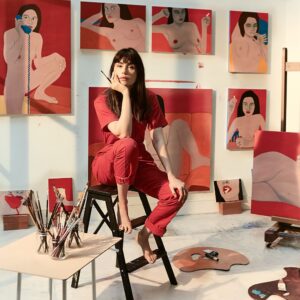Yvette Greslé talks to Sarah Maple before her forthcoming show at the Tallinn City Gallery in Estonia (exhibition runs through to 24 February). Maple (b.1985) is an emerging artist living and working in Sussex. In 2007 she won the ‘4 New Sensations’ competition for emerging artists run by Charles Saatchi. Her work has been exhibited in New York, Canada, Israel and throughout Europe. Working across media (including painting, photography and performance), Maple questions what it is to be a woman and an artist of her generation in the 21st century.
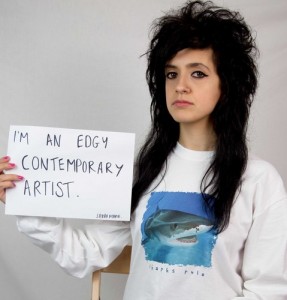
Deploying deadpan humour, visual tropes and conventions, Maple plays with images from art history to advertising. Her re-staging of the familiar questions of feminist practice (from the perspective of a younger 21st century generation), is unsettling and self-consciously awkward, while it makes us laugh. Freedoms, the right to a voice, and the right to citizenship (hard-won by earlier generations of women) are never necessarily guaranteed and are certainly not universal. In repetitive actions and gestures, exaggeration and flatness, we see a critical strategy that alerts us to history’s repetitions and dead-ends.
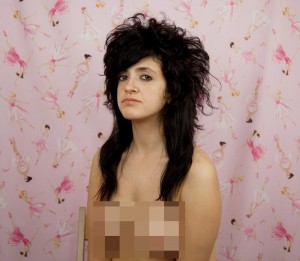
What is your process as an artist? Are you a research led artist? What are your sources?
I usually have a period of working intensely, followed by a year or longer of figuring out what I want to do next. I take a step back: do a lot of reading, look at some shows. I also like comedy, theatre, going to talks and lectures. After this, there’ll be one idea that then inspires the next body of work. I don’t like to rush the process at all. I want to take time over everything. I’m also greatly influenced by the people around me. A lot happens by chance. I’ll catch something on TV, or overhear a conversation and it sparks something.
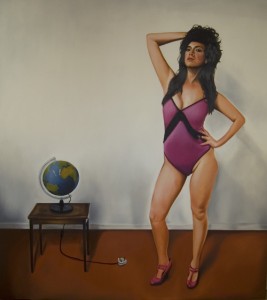
Tell me about your relationship to performance. What does performance mean to you?
I absolutely love working with performance. I would like to look at more live performance in my next body of work. I saw the Gillian Wearing show at Whitechapel and I absolutely loved her video work, really inspiring stuff. I see all my self- portraits as performance. I like playing with the idea of what it means to be a woman today, what is expected of me and how I want to challenge that. I want to bring things to the surface that we subconsciously accept as the ‘norm’.
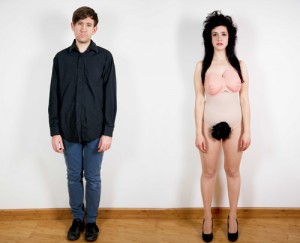
What was the impetus for ‘An artist and a female artist’? The way you construct the work is interesting: the opposition you set up between man/woman; the deadpan humour; the exaggerated dress-up.
I re-shot this many times to get it right. I like that it looks like a police line up, having a light shone in our faces. I got the idea after going to a performance night where all the female performance acts were naked. It kind of annoyed me. It was as though the nakedness was an attempt at adding depth to something. All the men wore clothes.
The piece is about inequalities in the art world but also in the world of work more generally. I wanted the work to be satirical, to make you laugh but also to feel uncomfortable. Someone suggested that I shouldn’t have had the silly dress up and that I just should have been naked. I would never do that. It would completely take away from the work. It wouldn’t be funny anymore, and it would completely change the meaning for me. I’m also having a bit of a laugh at the over sexualised imagery of women’s bodies in the media. I’m mocking it.
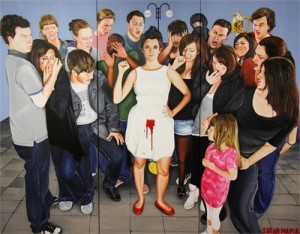
In your painting, do you work from particular sources? What is interesting to you about the way you use the medium? ‘Menstruate with pride’ takes on a subject laden with all kinds of historical meanings, and cultural associations. The way you play with gesture, facial expression, and emotional register is really interesting. There’s a flatness to the way you apply the paint. As a painter what are your influences? What are you reaching for with the medium? Then there’s the reference to a triptych, but it’s not a triptych in the sense of three separate pieces?
I wanted this work to feel amazing and look ‘mighty’ in the space (‘mighty’ is the best word I can think of to describe it!). I wanted almost a religious feel. Initially I got a group of people together and we literally acted out the scene in the painting which I then photographed. I switched a couple of faces around and I added some in at a later date (of course the monkey!). In this piece I’m thinking about the relationship between shame and women’s bodies: around menstruation but also around body hair. The work is also about women’s sexuality, and the pressure put on women to be a certain way. I wanted the figure at the centre to be defiant despite the reactions (and the repulsion) of the people around her.
When it comes to painting I do love flatness. I want a painting to look like a painting. I like Peter Blake, David Hockney, Fridah Kahlo of course! Hogarth. Some of John Currin’s work.
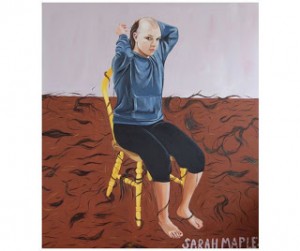
Frida Kahlo seems to be an important reference. I’m thinking of: ‘If I loved you it was because of your hair’. You seem to really explore a cultural/historical archive around woman – their bodies, inherited ideas about femininity and female sexuality.
I do a lot of reading and research but the final work is always very clean and simple (while I’m trying to talk about things that are complicated). This particular painting came out of my own insecurities. I saw a girl with the most beautiful blonde hair and I started thinking about how important hair is. I felt fed up. I was thinking about how I would like to denounce my sexuality by shaving my head and it made me think of Frida Kahlo. I also thought about Britney Spears. It’s very defiant for a woman to shave her head. For a woman to denounce her sexuality is the ultimate act of defiance. I am very interested in the cultural/historical ideas of what it means to be a woman, and how our values are so engrained. We subconsciously act out gender roles that define us and we limit our life experiences. Men are also affected by this. These subconscious things are so hard to change and so hard to challenge. I can’t see a serious progression for women if this goes unchallenged.
You refer a lot to women and Islam. There is obviously risk attached to these works. You’re dealing here with volatile questions. Can you speak a bit to this, and refer to a specific work – one that you found especially challenging.
It is difficult with this kind of work and I suppose especially with my style, the way I apply humour etc. Some people take that as ‘you’re being flippant’ or mocking for the sake of it (especially as I made these works at the start of working as an artist). It was assumed that I was just trying to be attention-seeking. There was a lot of backlash after the piece ‘I heart Orgasms’ which is a women in a burqa wearing a badge bearing the title. These works speak to my personal background, the cultural mix in my family (Christian Dad and Muslim mum) and trying to balance the two. In making these works, I started to rebel against not the religion itself, but cultural attitudes of those around me.
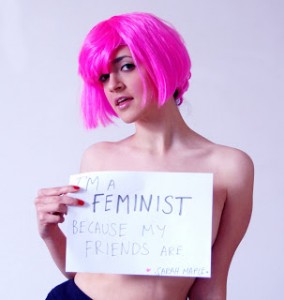
I’ve noticed that a few woman artists of your generation play with text in their works. Are you influenced by artists such as Jenny Holzer or Barbara Kruger? Or are there other influences – such as social media? The way you hand write the message is interesting, and I’d like to know more about these kinds of aesthetic decisions.
I suppose the signs started because I like the whole handmade feel, the imperfection of it. I also love slogans and it was a way to explore those. Maybe not so much social media but I would say advertising has been a big influence over me. I love advertising. I find it fascinating and this definitely filters through into my work.
Performance is so much a part of the history of feminist practice in art. Can you tell me a bit about ‘It’s just like any other job really …’ How did this work come into being? Did the experience of the performance open up new questions for you as an artist? It was a really extended piece. I wondered about the physicality of the work, the physical challenges, the relationship to audience (the choice of space was interesting, a work open to whoever happened to be walking by, and not simply an art world).
‘It’s just like any other job really …’ was very new to me and it was great to collaborate with Beverley Knowles on it. We came up with a Santiago Sierra style work where a group of girls would dress up in identical Miss World outfits and each enter to Miss World music, in role, waving etc, then stand against the wall with their back to the audience. I tried to explain to the girls beforehand ‘It’s like you’re on top of the world, then when you stand against that wall, you’re nothing’. I did not need to explain any of this because we definitely all felt this way, like dolls. The gallery was a perfect location as it’s all made of windows. Nobody was allowed inside, everyone stood outside and watched, like we were untouchable in a fish bowl. I was told passersby were rating us on our arses etc and taking photos. I love how any member of the public would have seen it. I always want my work to be seen and experienced by people not necessarily in the art world. For me that’s really who it’s for after all!
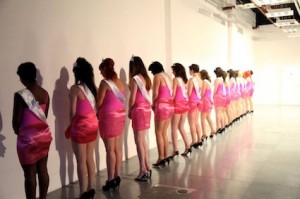
I’ve never done a live performance like this before. To a degree my experience was tainted by the fact that I was organising all these ladies and I just wanted everything to go right! I obsessed about it being perfect but as the day went on, ideas evolved organically and things changed and that was great. It was exhausting, everything hurt. I could not have anticipated what did happen and how I would feel. Two girls fainted and I felt dreadful about it. During the performance it really did make me think a lot, and many of the girls shared their feedback about the experience. I would definitely like to do something like this again and I am looking into this at the moment.

Maple’s current exhibition at the Tallinn City Gallery, Estonia is conceived by Anne Maisvee and co-curated by Rebeka Põldsam and Beverley Knowles.
